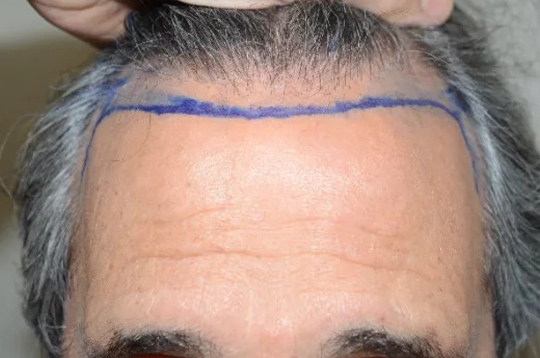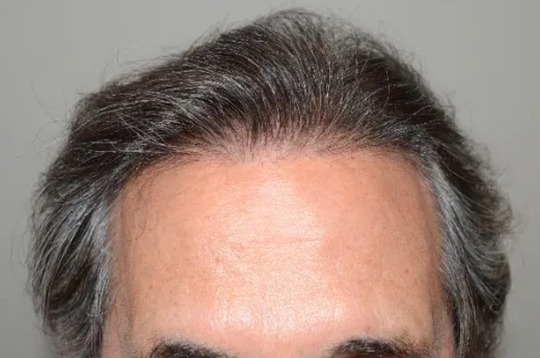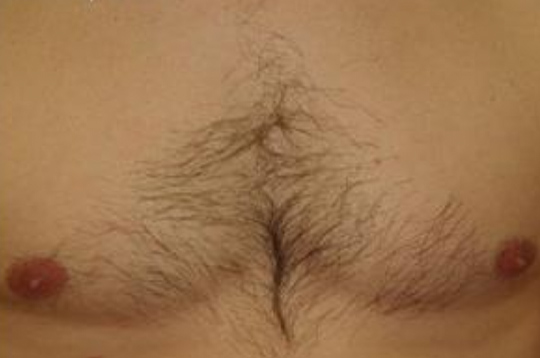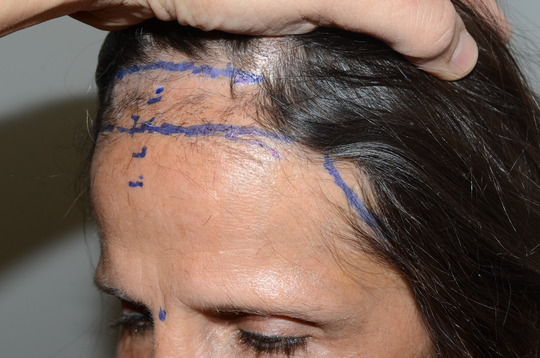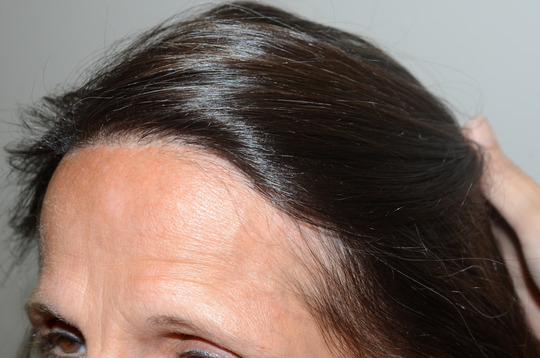During a hair transplant, a plastic surgeon harvests hair follicles from one area of the scalp or body and transplants them to an area suffering from hair loss. The results are permanent and help to restore patients’ confidence in their appearance. Learn more about your hair transplant options at Foundation Aesthetic Hair Restoration.
Hair Transplant
ACTUAL PATIENT
Causes of Hair Loss in
Men and Women
Although you might picture a balding man when you think of hair loss, the truth is that both men and women can and do lose their hair. The reasons for hair loss can differ from person to person. In many cases, hair loss is genetic. Both men and women can experience hereditary hair loss, which is known as androgenic alopecia. When it occurs in men, androgenic alopecia is called male pattern baldness. In women, it’s called female pattern baldness. When someone has androgenic alopecia, the hair follicles in certain areas of their scalp start to shrink. The follicles eventually get so small that they can’t produce hair.
In men, hair loss often occurs on the top of the head or along the hairline. The first signs of hair loss in men might be a bald spot or a receding hairline. In women, androgenic alopecia causes more diffuse hair loss. Often, the first signs of female pattern baldness are a wider part or noticeable thinning of the hair. While pattern baldness is the most common type of hair loss, there are many other potential causes.
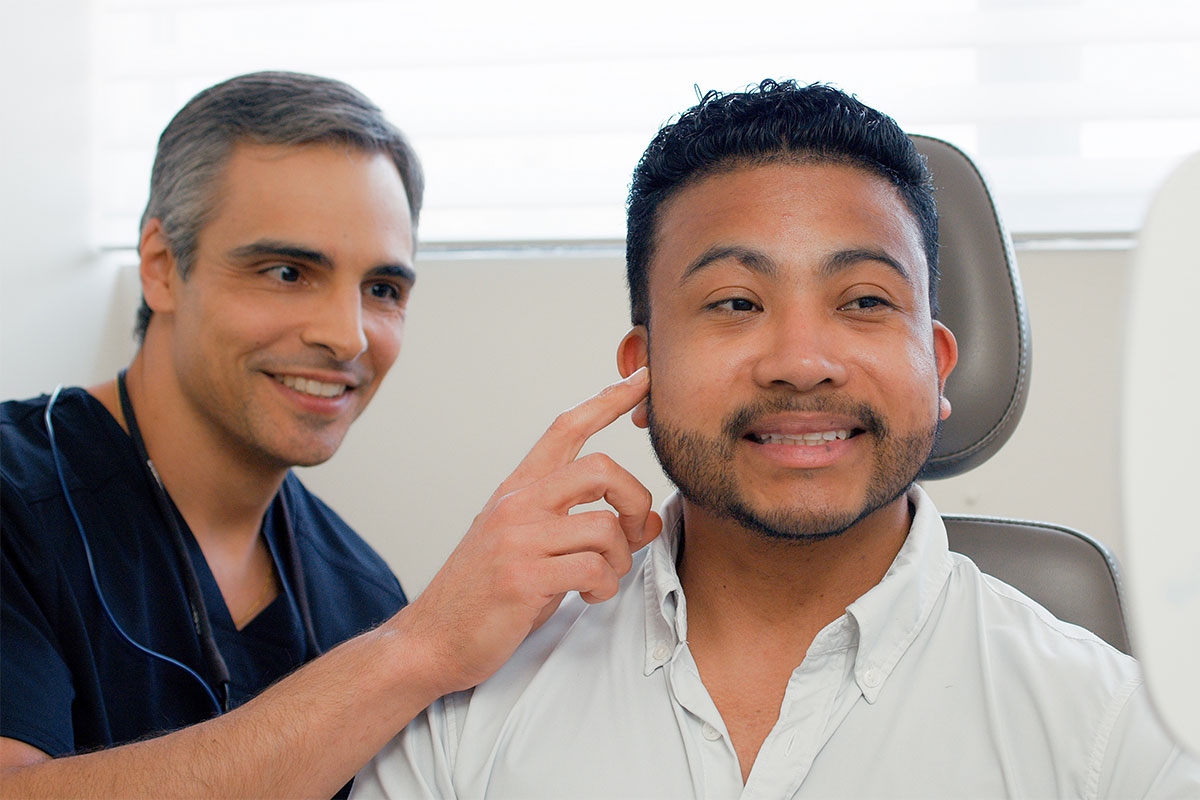
ACTUAL PATIENT
Stress-Induced Hair Loss
One surprising cause of thinning hair in men and women is stress. Hair loss due to stress is called telogen effluvium. Unlike androgenic alopecia, it’s not permanent. When someone experiences telogen effluvium, more hair than usual moves into a resting phase, then sheds. The hair grows back once the stress causing it has diminished.
Hair loss can also be caused by various factors, including certain medications, chemotherapy, tight hairstyles, scalp infections, hormone imbalances, and alopecia areata, an autoimmune disorder. Before you schedule a hair transplant, it’s important to work with a doctor to diagnose the root cause of your hair loss. Knowing what’s contributing to your hair loss will help you determine the best way to treat it.
How a Hair Transplant Works
The best way to understand how a hair transplant works is to think of it as a surgery that moves hair from one area of the scalp or body to another. The surgery is also sometimes called hair restoration.
When a man experiencing male pattern baldness wants a hair transplant, the surgeon will usually choose hair from the sides or back of the scalp to act as the donor hair follicles. Men with male pattern baldness usually don’t ever lose the hair on the sides or back of the head.
If a woman wants a hair transplant, the location of the donor follicles will depend on the type of hair loss she is experiencing.
It’s also possible to transplant body hair to the scalp or to move hair from the scalp to another area, such as the eyebrows, chest, or beard.
During the first part of the hair restoration surgery, the surgeon will extract the hair follicles from the donor site. How they will remove the follicles depends on the hair transplant method they’re using.
In some cases, the follicle groups are harvested one by one. In others, the surgeon will cut away a strip of skin containing many follicle groups and separate them from the strip.
After harvesting, the follicles are prepared, then transplanted to the recipient site. How long the process takes depends on the number of follicles being transplanted and the size of the recipient area.
Recovery after the hair transplant surgery takes only a few days. The transplanted hair will typically fall out within a week or two. It will start to regrow after several months and any new growth will be permanent.
Anesthesia During a Hair Transplant
Surgeons typically do not use general anesthesia during hair restoration procedures as it is unnecessary. Instead, patients will be given a local anesthetic, similar to what you might receive before a dental treatment (but often much more comfortable). At Foundation Aesthetic Hair Restoration, we give the local anesthetic with a series of injections around the scalp.
With local anesthetic, patients feel nothing on the scalp while the surgeon harvests and transplants the hair follicles. If a patient is feeling nervous about the procedure, we give a light sedative, such as a Valium or Ambien, to help put them at ease. IV sedation, known as twilight sedation, is another option. If you choose to receive twilight sedation, you’ll be asked not to eat or drink anything for 8 hours before your hair transplant.

ACTUAL PATIENT
Hair Restoration Candidates
The type of hair loss you’re experiencing and the extent of your hair loss will determine whether or not you’re a good candidate for a hair transplant. Often, candidates for the procedure have lost a fair amount of hair already. While you might want to tackle your hair loss the minute it becomes noticeable, many surgeons advise waiting. Waiting allows you to determine the pattern of your hair loss. It also helps you avoid having to repeat the surgery in a few years as you continue to lose hair. Since hair can regrow after some causes of hair loss, waiting gives you a chance to see if your hair will come back on its own before you resort to surgery.
Different Types of Hair Transplants
FUT Hair Transplant
Follicular unit transplantation, or FUT, is sometimes called the strip method. During the harvesting phase of the procedure, the surgeon will cut out a small strip of skin from the scalp, containing the hair follicles that will get transplanted to the recipient area.
Once the strip is harvested, the surgeon will close the area with sutures. As the donor site heals, a small, linear scar will develop. Most people can cover the scar with their remaining hair, so it’s not visible. Since the surgeon harvests all the donor hair at once, FUT hair transplants usually take less time than FUE hair transplants. It can be ideal for candidates who want to cover a larger area of the scalp or body.
FUE Hair Transplant
Follicular unit extraction (FUE) often takes much longer than FUT, as the surgeon harvests each follicle group individually. The more painstaking process offers several benefits over removing a strip, however. First, removing the follicles one at a time eliminates the linear scar FUT produces. FUE creates tiny dots on the scalp, which aren’t visible once they’ve healed, even under short hair. Healing is also faster after FUE, both in the donor and recipient areas. Finally, removing the follicles one by one gives the surgeon the chance to closely inspect them, ensuring their viability, before they get transplanted into the recipient area.
Megasession Hair Restoration
If you have a significant amount of hair loss, the megasession hair transplant procedure offers a modern and advanced way to restore a full head of hair in the shortest amount of time. A megasession hair transplant takes one full day and involves one procedure. During the surgery, the surgeon will harvest between 3,000 and 4,500 micrografts.
Each of the grafts contains 1 to 3, or sometimes, 4 hairs. The surgeon will transplant them individually in a natural pattern throughout the scalp. The hair restoration procedure provides extensive coverage and significant density. While many patients are happy with their hair growth after their first megasession hair transplant, some have a second procedure several months later to improve density and coverage.
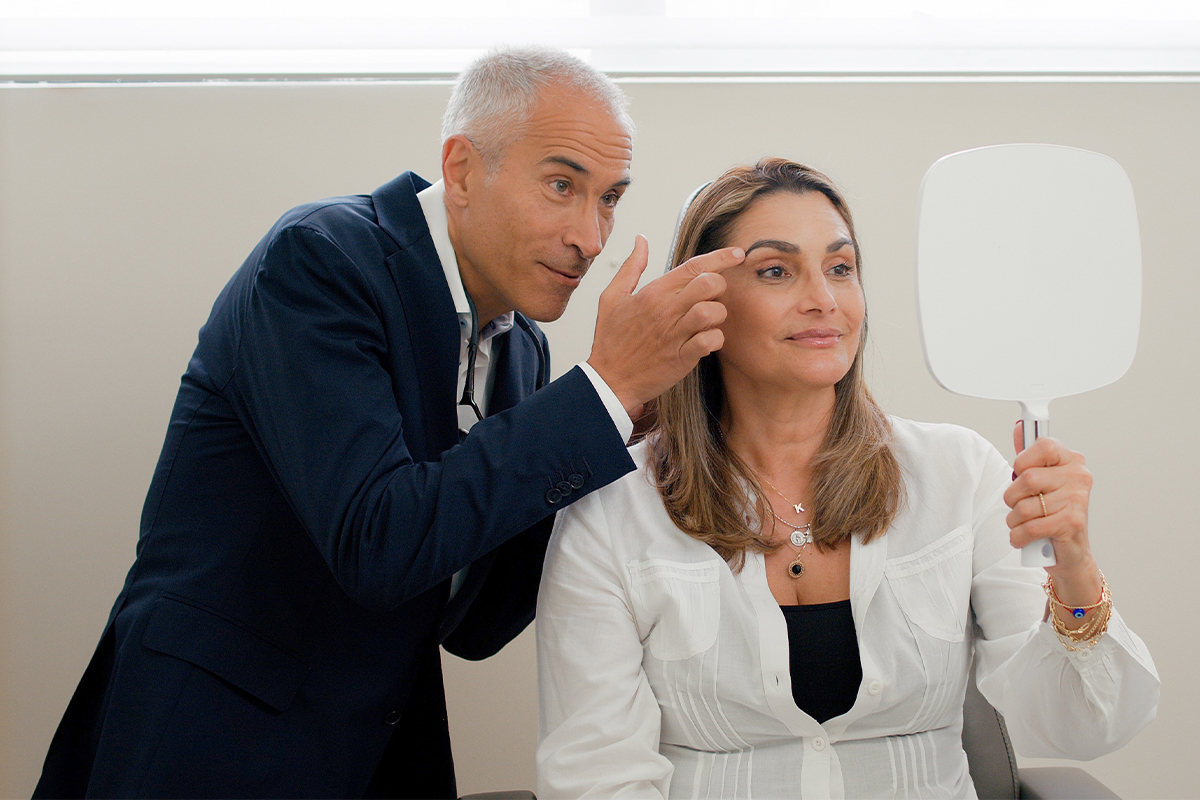
ACTUAL PATIENT
Hair Transplants for Women
Hair loss is almost as common in women as it is in men. Yet, many surgeons don’t recommend or perform hair transplants for women. Dr. J. Epstein and the hair restoration specialists at Foundation Aesthetic Hair Restoration in Miami understand that women can benefit from hair transplants as much as men.
The first thing to do when deciding if a hair transplant is the right option for a woman is to determine the cause of her hair loss. Some types of hair loss respond to the hair restoration procedure better than others. In some cases, if the hair loss is temporary, taking a wait-and-see approach might be best.
Women often also benefit from a combined approach to hair loss treatment. In addition to hair restoration surgery, a woman might use a topical hair loss ointment, change her hairstyle, or monitor her hormone levels.
Forehead Reduction
As an alternative or in addition to hair transplantation, some women choose forehead reduction surgery. Also known as hairline lowering surgery, a forehead reduction procedure brings the hairline forward. The surgery makes the forehead look smaller and the hairline more advanced.
It can help to reverse the appearance of a receding hairline or correct a naturally high forehead. If the hair in the area is thin, it’s possible for patients to combine a forehead reduction surgery with a transplant to create a fuller head of hair.
African American Hair Transplants
Some types of hairstyles are more damaging to the hair and follicles than others. Tight ponytails and braids contribute to traction alopecia. The use of heat or harsh hair treatments can also affect hair growth.
In the Black community, harsh hair treatments frequently lead to hair loss. Black men and women are also just as likely as people of other ethnicities to experience male or female pattern baldness.
Black hair has unique features and tends to be curly, which can make it more challenging to harvest and transplant during hair restoration. It’s important to find a hair transplant surgeon who has experience working with textured hair for the best results.

Body Hair Transplants
While the hair on the scalp tends to get a lot of attention, it’s not the only type of hair that can be restored. Dr. J. Epstein also offers body hair transplants to patients. Often, the goal of a body hair transplant isn’t to restore hair but to allow hair to grow in areas where it did not previously. For example, some people decide to transplant hair to their chests to create a fuller look.
Some people also want to transplant hair to the beard or mustache area. That can be particularly true for people who want facial hair but who find that it naturally grows in patchy or uneven patterns. The eyebrows are another popular location for a body hair transplant. Many people overplucked their brows or waxed too much when thin brows were trendy. They now find that the plucked or waxed brow hair isn’t growing back adequately.
Body hair restoration can use the hair from the scalp or from another area of the body. Once it’s transplanted to the new area, such as the beard or brows, it will start to grow like the other hair in that area.
Choosing a Hair Transplant Surgeon in Miami
When choosing a Miami hair transplant surgeon, it’s critical to work with someone who has extensive experience with hair restoration, your hair type, and the type of surgery you want.
The surgeons at the Foundation Aesthetic Hair Restoration, Dr. J. Epstein, Dr. Anthony Bared, and Dr. Gorana Kuka Epstein, have decades of experience with hair restoration and have performed thousands of Miami hair transplant procedures.
Dr. J. Epstein has performed scalp, eyebrow, and beard transplants, as well as hairline lowering surgeries. Dr. Kuka Epstein specializes in treating women’s hair loss.
A consultation with a Miami hair transplant surgeon before your procedure allows you to get to know your surgeon and to learn more about what to expect from the surgery.
Hair Transplant Recovery
Initial recovery is usually pretty quick after a hair transplant. The surgery typically causes little to no discomfort and many patients feel ready to return to work or other activities after just a few days. Since you may have some swelling on your scalp, you might prefer to wait 5 to 7 days before you go back to work. You can start exercising again on the sixth day. Usually, the transplanted hair falls out after a week or two. You’ll start to see new growth after several months, but until then, you can expect to look as you did before your hair restoration surgery.

Hair Transplant Post-Op instructions
After your hair transplant, your surgeon will provide you with a detailed list of instructions. It’s important to follow these instructions closely, as doing so will help improve your results and speed up hair regrowth.
The instructions will let you know when you can wash your hair again and when it’s safe to dye it or use hair styling tools. Your surgeon will also let you know what you need to avoid during the recovery.
How Much Do Hair Transplants Cost?
The cost of a hair transplant can vary widely. Several factors influence the price of the surgery. The number of hairs you want to transplant affects the cost, as does the extraction method the surgeon uses.
The surgeon’s skill and reputation can also affect the price of a hair transplant. Less experienced surgeons might charge less than one with years of experience and thousands of surgeries under their belt. In many cases, however, you get what you pay for—experienced surgeons charge what their skills are worth.
Location is another factor that influences surgical costs. Some areas of the country have higher prices for hair restoration than others. While there is a fair amount of variation when it comes to the surgical cost, the average price of a hair transplant is around $7,500.
During your consultation, your surgeon can explain the cost to you, as well as the factors affecting it. They can also inform you of any payment plans or financing options to help you cover the cost of the surgery.
FAQs
Is a hair transplant right for me?
Whether or not a hair transplant is right for you depends on the type of hair loss you have and how severe the loss is. If you’re concerned about your hair, your best bet is to talk to a hair restoration surgeon about your options.
Do I have to use my own hair?
Yes, hair transplant patients need to use donor hair from their own bodies. If hair from another source is used, the body will reject it.
What type of anesthesia is used during a hair transplant?
The surgeons at Foundation Aesthetic Hair Restoration use a local anesthetic and sometimes an oral or twilight sedative during the surgery.
Will I continue to lose hair after a hair transplant?
Hair restoration corrects existing hair loss but doesn’t prevent future hair loss from occurring. Depending on how your hair loss progresses, or on when you have your first hair transplant, you might decide to have another procedure a few years later.
What other hair loss treatments are available?
Non-surgical hair loss treatments, such as topical ointments or oral medications, might help slow down or reverse hair loss in some patients. The treatments aren’t permanent, however, and need to be used consistently for the results to continue.
When can I style my hair again after a hair transplant?
Your surgeon will let you know when it’s okay to start styling your hair again. Usually, you can wash your hair again within a week. You might need to wait a few weeks before you can dye it or use styling products.
Schedule a Hair Transplant Consultation in Miami Today
If a hair transplant sounds like the solution to your hair loss frustrations, contact the Foundation Aesthetic Hair Restoration in Miami, Florida, today. Our team of board-certified, experienced hair restoration surgeons can talk to you about your hair loss and recommend the course of treatment that’s best for you. Call 305-680-5918 to book a consultation for a hair transplant today.
ACTUAL PATIENT
Contact Us Today
Start Your
Journey
Have questions? Reach out today
for answers and more information.

